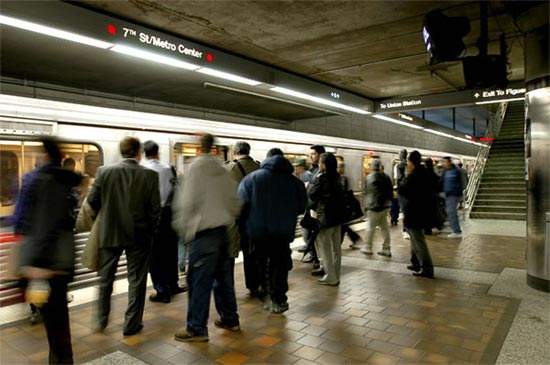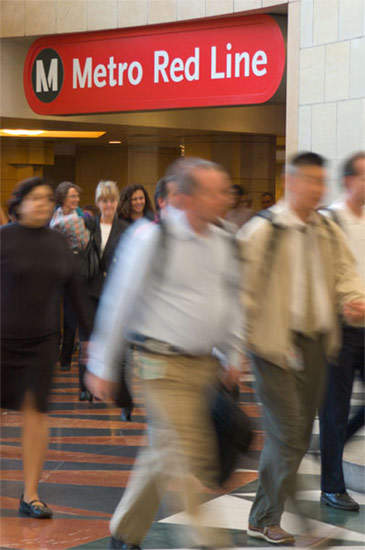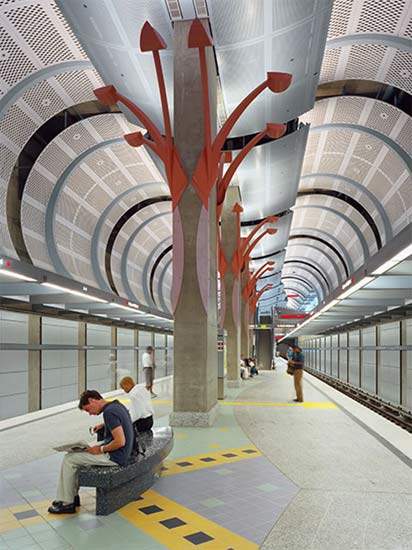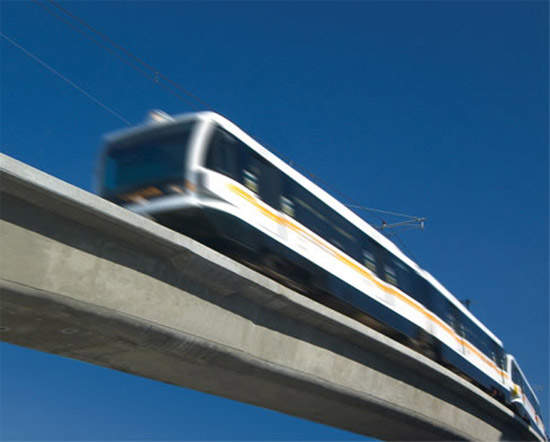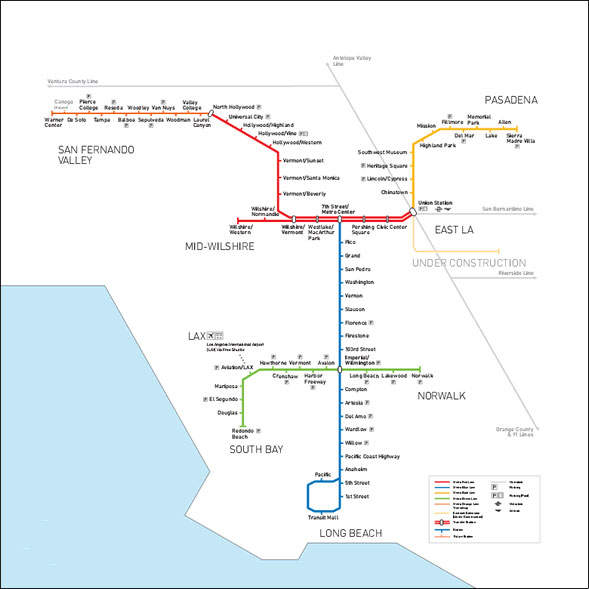In the 1950s and early 1960s Los Angeles had an extensive network of surface tramways, but all were at the mercy of the private car and were closed by 1963. The city went through two decades without a major public transport system, but recognised its shortcomings, and eventually chose to reintroduce a new mass transit system to the west coast US city.
Today, there is one underground metro route and three operational light rail transit lines, with a fourth under construction. The first to open was the Metro Light Rail Blue Line, followed in 1993 by the first section of the Metro Red Line underground subway.
The introduction of mass transit orientated transportation has reduced the number of private cars on the road and the city has also introduced high-speed bus routes, which use dedicated lanes to negotiate traffic.
The project
At present, the population of Los Angeles has a 150km (93.1 mile) light rail and subway system, following the opening of the Metro Gold Line Eastside Extension from Union Station south to Atlantic in 2009.
As part of the current programme of works, the Metro Gold Line was extended south from Union Station with eight stops to Pomona/Atlantic in the south east of the city. The six-mile extension, opened in November 2009, brought the total metro rail system’s length to 79 miles of rail.
On the opposite side of Los Angeles is the fourth LRT route, the Exposition Line, which is being constructed in two phases.
The first phase, scheduled for completion in 2012, will run from Downtown Los Angeles to Culver City, serving ten stations along a 13.6km (8.5 miles) stretch. It is currently under construction and is scheduled for completion in 2012.
Phase 2 will extend the line to Santa Monica. Construction is scheduled to begin in the end of 2010 and is expected to be completed by 2015.
The Alternatives Analysis study for the Phase 2 Eastside Extension (Foothill Extension) of Metro Gold Line has also been completed. The 11.5-mile route will extend from Pasadena to Azusa. The project, estimated to cost $450m, requires new track to be laid along the the entire stretch and construction of six new railway stations. The project also includes installation of crossing and utilities system.
The Metro Gold Line Foothill Extension Construction Authority opened the bidding process in September 2010. Shortlisted firms will be sending in their proposals in January 2011. The winning bidder will design, finance and build the project through a public-private partnership. The project will create a 3.2km transit link between the Metro Gold and Metro Blue lines.
Combined, the two projects equate to a $1,538m investment, with a budget of $898m for the Metro Gold extension and $640m for the Exposition Line.
Infrastructure
The rail transit system in Los Angeles consists of the Metro Red Line – the 28km underground route from Union Station to North Hollywood, the 35km Metro Blue Line heading south from the city centre, the 32km Metro Green Line running east–west in the south of the city, and the Metro Gold Line, 32km long and the latest to be opened.
With 13 stations on its northern route, Metro Gold Line was extended south with another eight stations on a six-mile alignment from Union Station. It forms a continuation of the existing Gold Line, and the estimated ride time from Union Station to the southern terminus at Atlantic is 17 minutes.
Two of the new stations are underground, and construction includes boring twin tunnels under Boyle Heights for a distance of 2.9km (1.8 miles).
Groundworks began in 2004 with the aim of passenger services beginning before the end of 2009. A park-and-ride site was provided at Atlantic station. It was opened in November 2009.
The first section of the Exposition Line entered a four-year construction phase at the end of September 2006, following completion of final design work by the Exposition Metro Line Construction Authority (Expo). Until complete, the line will be owned by Expo, and will later be transferred to the Los Angeles Metro.
The majority of the route is being built at grade, but the stations at La Cienega Boulevard. and La Brea Avenue will be on elevation.
Rolling stock
The underground line is worked by a fleet of trains built by Ansaldo Breda of Italy. The vehicles are similar to those in service on the New York Subway, with stainless steel bodies and typical underground high-density seating inside.
On the light rail routes, a fleet of modern LRVs are in service, running as two-car sets, usually in pairs. These trains form the backbone of an intensive service which can run at five-minute intervals during peak times; a reduced service operates during the day.
Signalling and communications
All trains on both the underground and light rail routes are governed by colour light signals. The light rail system has the benefit of running mainly on an alignment segregated from neighbouring roads, allowing reliable journey times.
The future
The first section of the Exposition light rail line is due to open in 2010, but a future proposed extension will take it to the City of Santa Monica. There are also plans to extend the underground route towards the Pacific Ocean, following a feasibility study into tunnelling.
The Alternatives Analysis study has been completed for the second phase of the Metro Gold Line Eastside Extension (Foothill Extension). The construction is expected to begin in 2010. The environmental review of the Regional Connector Transit Corridor is also being conducted. The project will create a 3.2km transit link between the Metro Gold and Metro Blue lines.

